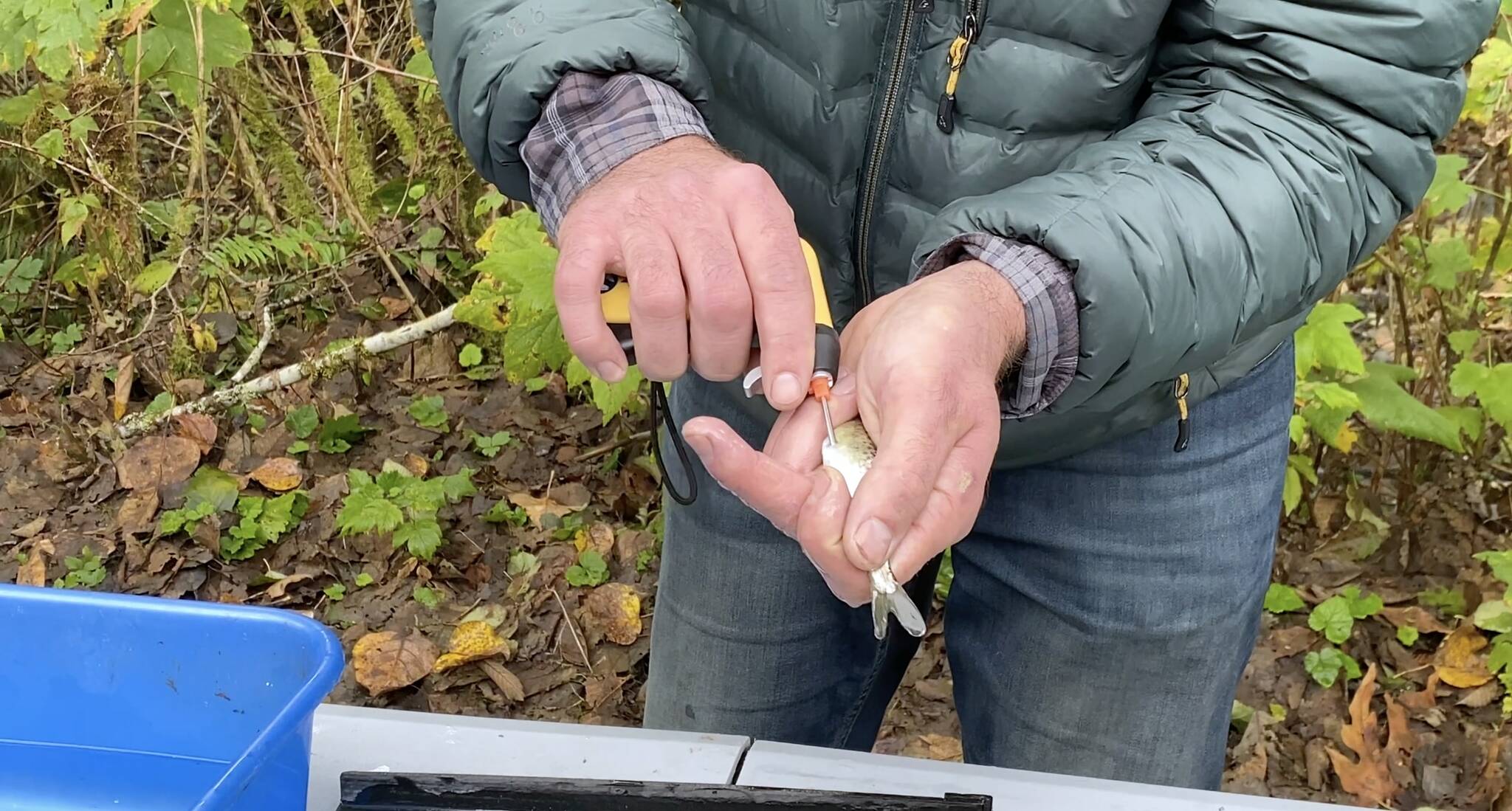Scientists with the King County Department of Natural Resources and Parks are using technology to save the endangered chinook salmon in the Green River.
The project began near Auburn, where scientists with the county set up a fish trap in the river to collect young chinook salmon. Once collected, the scientists injected a small transponder with a unique number in each fish and released them back into the river.
Downstream in Tukwila, the scientists set up a receiver antenna that records when each salmon passes through. Using these tools, the scientists determined how long it takes the young salmon to swim downstream, and thus how important the lower section of the river is to their survival.
By tracking the migration of young chinook salmon, scientists hoped to better understand how to effectively restore their habitat, according to King County.
“We have a longstanding commitment to protect and restore chinook salmon habitat to help recover depressed populations,” said Chris Gregersen, a fish ecologist with the King County Department of Natural Resources. “With this research, we can help identify where these fish are actually going to be living and help us tailor our restoration projects to have the most benefit.”
The data from this study completely changed the understanding of chinook salmon in the Green River, according to King County.
Previously, scientists who studied the fish believed the salmon moved through the lower part of the river rather quickly, according to King County. The study proved the opposite to be true. The lower part of the Green River is actually extremely important to the survival of the young chinook. Some of the salmon spent as long as two months in the lower part of the river before traveling downstream to Tukwila, according to King County.
“We found this spring that the smaller the fish, the more time they spent in the lower Green,” Gregersen said. “The larger fish tend to move through really quickly. The smaller fish tend to stick around for upwards of two months.”
As the fish grow, their habitat needs change. For example, really young salmon need shallow, slow-moving water protected from predators. As they get bigger, they can venture out into the open river, Gregersen said. Now that the scientists know what size salmon stay in the lower Green River, they can tailor the restoration projects to match the specific needs of the smaller salmon, Gregersen said.
Restoring the lower Green River will help with efforts to recover the chinook salmon populations, which have been decimated by the effects of climate change and overfishing, according to the National Wildlife Federation. In fact, the population of chinook salmon has decreased by 60% since salmon population tracking began in 1984, according to the Environmental Protection Agency.
River restoration projects have been shown to improve the ecosystem and long-term outlook for salmon, according to Puget Sound info. This study armed King County scientists with the knowledge needed to effectively restore the river.
Talk to us
Please share your story tips by emailing editor@kentreporter.com.
To share your opinion for publication, submit a letter through our website https://www.kentreporter.com/submit-letter/. Include your name, address and daytime phone number. (We’ll only publish your name and hometown.) Please keep letters to 300 words or less.

